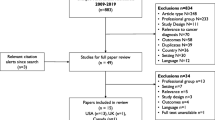Abstract
Background
It is well documented that transitions of care pose a risk to patient safety. Every year, graduating residents transfer their patient panels to incoming interns, yet in our practice we consistently find that approximately 50% of patients do not return for follow-up care within a year of their resident leaving.
Objective
To examine the implications of this lapse of care with respect to chronic disease management, follow-up of abnormal test results, and adherence with routine health care maintenance.
Design
Retrospective chart review
Subjects
We studied a subset of patients cared for by 46 senior internal medicine residents who graduated in the spring of 2008. 300 patients had been identified as high priority requiring follow-up within a year. We examined the records of the 130 of these patients who did not return for care.
Main Measures
We tabulated unaddressed abnormal test results, missed health care screening opportunities and unmonitored chronic medical conditions. We also attempted to call these patients to identify barriers to follow-up.
Key Results
These patients had a total of 185 chronic medical conditions. They missed a total of 106 screening opportunities including mammogram (24), Pap smear (60) and colon cancer screening (22). Thirty-two abnormal pathology, imaging and laboratory test results were not followed-up as the graduating senior intended. Among a small sample of patients who were reached by phone, barriers to follow-up included a lack of knowledge about the need to see a physician, distance between home and our office, difficulties with insurance, and transportation.
Conclusions
This study demonstrates the high-risk nature of patient handoffs in the ambulatory setting when residents graduate. We discuss changes that might improve the panel transfer process.
Similar content being viewed by others
References
Kripalani S, LeFevre F, Phillips CO, Williams MV, Basaviah P, Baker DW. Deficits in Communication and Information Transfer Between Hospital-Based and Primary Care Physicians. JAMA. 2007;297:831–841.
Arora V, Lavinger D, Humphrey HJ, Meltzer DO. Communication failures in patient sign-out and suggestions for improvement: a critical incident analysis. Qual Saf Health Care. 2005;14:401–407.
Vidyarthi AR, Arora V, Schnipper JL, Wall SD, Wachter RM. Managing Discontinuity in Academic Medical Centers: Strategies for a Safe and Effective Resident Sign-Out. Journal of Hospital Medicine. 2006;1:257–266.
Horwitz LI, Moin T, Krumholz HM, et. al. What are covering doctors told about their patients? Analysis of sign-out among internal medicine house staff. Qual Saf Health Care 2009;18:248–55.
Chang VY, Arora VM, Lev-Ari S, et. al. Interns overestimate the effectiveness of their hand-off communication. Pediatrics 2010;125(3):491–6.
Young JQ, Wachter RM. Academic Year-End Transfers of Outpatients From Outgoing to Incoming Residents: An Unaddressed Patient Safety Issue. JAMA. 2009;302:1327–1329.
Salsberg E, Rockey RH, Rivers KL, Brotherton SE, Jackson GR. US Residency Training Before and After the 1997 Balanced Budget Act. JAMA. 2008;300: 1174–1180.
Nadkarni M, Reddy S, Bates CK, et al. Ambulatory-based education in internal medicine: Current organization and implications for transformation. Results of a national survey of resident continuity clinic directors. JGIM 2011;26:16–20.
Acknowledgments
We thank the medical residents at Beth Israel Deaconess Medical Center for performing the chart review and patient surveys and for the outstanding care they provide to their patients. We received no funding for the design implementation, interpretation or publication of this study. This work was presented at the Society of General Internal Medicine national meeting in Minneapolis, Minnesota in 2010.
Conflicts of Interest
None disclosed.
Author information
Authors and Affiliations
Corresponding author
Rights and permissions
About this article
Cite this article
Caines, L.C., Brockmeyer, D.M., Tess, A.V. et al. The Revolving Door of Resident Continuity Practice: Identifying Gaps in Transitions of Care. J GEN INTERN MED 26, 995–998 (2011). https://doi.org/10.1007/s11606-011-1731-8
Received:
Revised:
Accepted:
Published:
Issue Date:
DOI: https://doi.org/10.1007/s11606-011-1731-8



